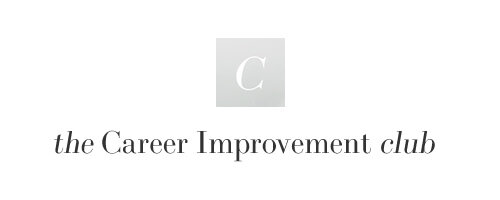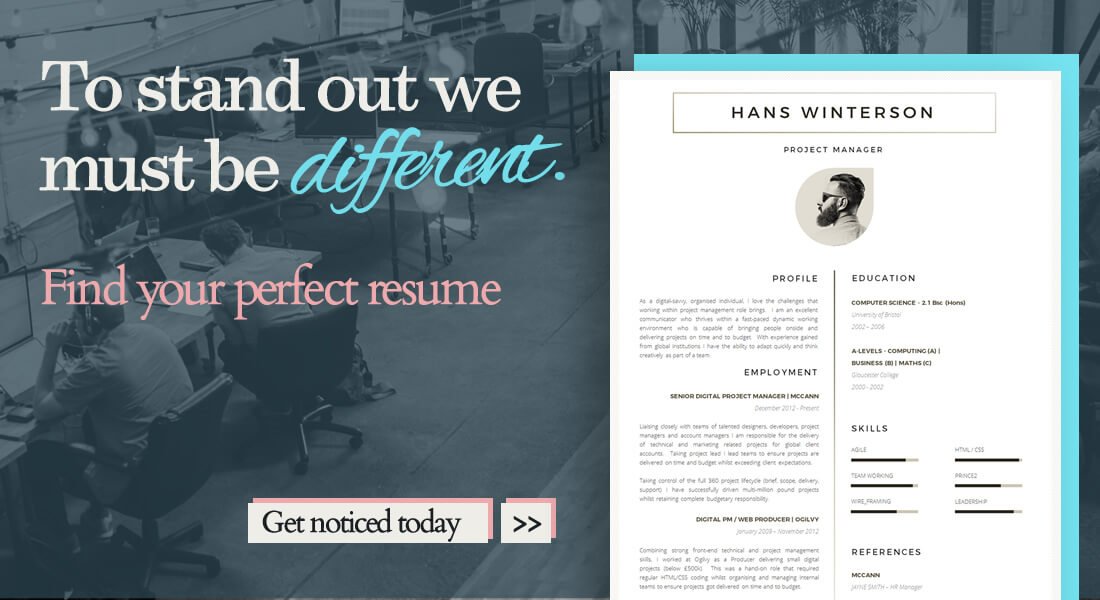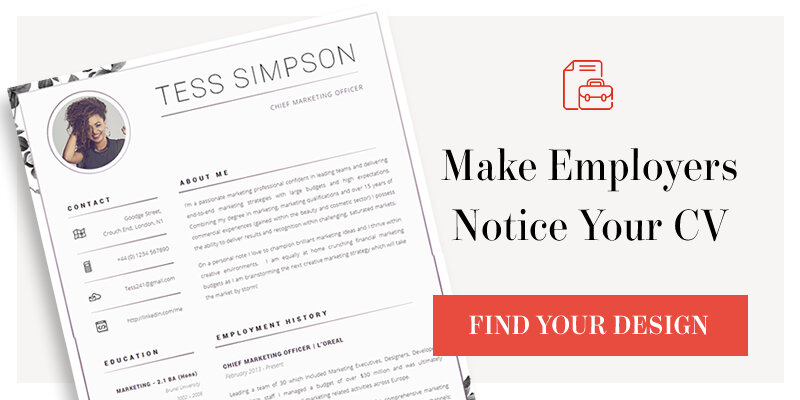Making a job application can be an exciting experience, you've done some research into the right roles, planned your career move and found the perfect opportunity that ticks all the right boxes. You attach your CV, click send and cross your fingers.
But now what?
Well, typically most people wait for a bit (and sometimes a lot), however waiting has a nasty habit of breeding uncertainty and frustration. After a short while you'll be left doubting yourself, feeling negative and asking questions like...
Did they receive my job application?
Has my CV even been looked at?
Are they still interviewing - is it even live anymore?
I haven't been ghosted again have I?
If you can relate to this then it’s time to send a follow up to find out what's going on.
By sending a follow up reinforces your interest in the company, reminding employers you're still available and keen and also bumps your details to the top of their inbox and to the front of their minds.
In this article, we’ll give some tips on when to follow up on your job application or job interview, and provide some best practices when doing so. Read on...
The Follow-Up Process
It is great to be the eager, proactive type who wants to find out what's happening and where your application is in the hiring process. However, there are right and wrong ways of going about it, if you do it the wrong way you may come across as overzealous, even desperate and end up tarnishing your chances of getting the job.
In this guide will help you with the correct process for following up on a job application (or job interview).
What’s In…
When to follow up on a job application.
What information to include in your job application follow up.
Email vs Phone (with phone script example).
Top tips to WOW the hiring manager.
When to follow-up on a job application
Before you follow up, it’s important to be reminded that hiring managers receive hundreds (and for bigger corporations) even thousands of job applications for a single job role.
It takes time to sieve through all the potential candidates and arrive at a decision on who to screen or interview, so getting too hasty may irritate your new potential employer. Not only that, but pushing a reply within a few days after your application or interview date, makes it seem as if you do not respect the hiring managers schedule. You must appreciate their time as well as your own.
So, how long should you wait before following up your job application without seeming overeager and desperate?
A general recommendation is anywhere between 4-10 days after you’ve submitted your first application. But there are other factors in play...
For Smaller Companies where the Founders or Senior Managers conduct the recruitment process it can take a little longer to get a response as these people have vast responsibilities and schedules, spinning many plates at once. Be conscious of their time and don't pester. I would recommend following your application up after 7 days.
For Larger Corporations or those using Recruitment Agencies you're applying to a dedicated recruiter whose job it is to screen candidates and move the hiring process along quickly. It's OK to chase a little harder here, I would therefore recommend following up after 4 days and again at 10.
What information to include in your job application follow-up
As an overview your follow-up email should include the following…
The name of the hiring manager.
The job title you are applying for.
The date of your application.
An expression of interest.
A polite request for an update.
Time and time again, companies want to make sure that you’ve done your research. They want someone that merges with their values and goals and can work together towards the future success of the company.
Where possible you can really boost your application chances by finding the name of the hiring manager and then approaching them directly. This will help to give a personal touch to your follow up email - allowing them to see you as a real person and not just a name on an application.
Within your email, you’ll want to remind them of the job role (usually they have more than one going at the same time) as well as when you applied for the role. This will aid the hiring manager in recalling your application as well as giving them a subtle nudge about the closing date.
It is imperative that you reinstate your interest in the job. Following up is already getting a step ahead of most candidates as it shows your interest in the company. However, remember to be specific in your email. If you’ve already had an interview, citing a conversation that you had and why it interested you as well as your excitement to hear back.
Finally, politely ask for an update: would it be possible to provide me with an update on the application, please?
Email vs Phone
A good CV (or Resume) and email communications are important for opening doors but an online approach only tells half the story. Recruitment is ultimately a people / communication game, in my opinion nothing beats a good old conversation and getting to know someone.
CAUTION: If the job application states not to follow up via call or email - it is important to abide by this. Otherwise, you may be pegged as a problem and it could hurt your candidacy.
I would always advise trying to phone a hiring manager after you’ve made your job application. Here are some things you’ll need to know…
Reasons for calling.
What to say.
Example script.
REASONS FOR CALLING
Other than the fact you’re calling to gain an update on your application, you’ll need to elaborate and engage in the art of small talk specifics:
Some reasons for calling can include:
Making sure they received your application.
Asking when the interview process will start.
A friendly introduction (with a quick sell to reinforce interest and skills).
If you’ve already had your interview, you can follow up with:
Thanking them for the interview.
Providing additional information that might have been missed in the interview.
Expressing your interest again and providing an update on your availability.
WHAT TO SAY
You’re going to want your call to be brief and straight to the point, however, you’re also going to need to sound confident with the aim of leaving a lasting impression.
You’re aiming to speak to the key hiring decision maker, therefore after a brief intro you need to qualify that you’re speaking to the relevant person for the role. Remind them of the role that you’re calling about and what you want to know - perhaps you’re calling to see where they are in the search process, when you could expect to hear about an interview, or whether they need any additional information that could help them with the process.
It’s about giving off positive vibes and establishing a relationship.
TIP: If you catch your contact at a good time you may well find yourself in a telephone interview scenario, be prepared for this by having the following information in front of you:
Your CV / Resume
The job specification / advert
Their LinkedIn profile open
The company website open
EXAMPLE SCRIPT
Hi, is that (Name)
Yes
Hi (Name), my name is (Your Name), I noticed a recent posting on (Job Board / Source) which really caught my eye. It was for (Job Vacancy Title) is that a role you are hiring for?
Yes (If the answer is “No” ask if they know who the hiring manager is and if you could be transferred or given a number to get them on).
I submitted an application on (Date) and just wanted to make sure that you received it OK?
Yes here it is.
—-
The conversation will evolve from here, however, you can steer it in the direction you want by asking different and more probing questions (depending on how receptive the manager is and how brave you are feeling). Questions may include:
I am really interested in both the role and your company can you spare five minutes to discuss it with me?
If you can spare five minutes can I run through my CV / resume with you?
I imagine you’ve had a strong response so far, how have you been getting along with the role?
Are you interviewing yet, based on my CV / resume would you consider me?
Can you tell me about your recruitment process, what are the next steps?
I love the sound of the opportunity, I’m prepared to move my other appointments to work around your schedule.
The aim of the call is to build rapport, and declare your interest. It’s also useful to hear initial feedback on your CV, often when employers / recruiters are caught off guard they will give a more honest opinion of your CV / resume. This can be really useful as it gives you a chance to overcome objections immediately and suppress any doubts on their part.
Final Tips & Suggestions
We’ve already given you a guide on how and when to follow up on your application or interview. Here are some additional pointers to give you the extra edge…
1. CALL IN THE MIDDLE OF THE WEEK
You’re not going to want to call/email on a Monday. Think about when you’re at work, arriving at your inbox on a Monday morning. You sort out your list of priorities and a follow-up probably isn’t the most important thing for a hiring manager.
Monday will be their busiest day. Whilst Friday probably is not the busiest, it’s the end of the week and emails are not a priority when you're wrapping up your week and heading out of the door. So, your follow-up may be swept up into the next week's priorities.
Tuesday - Thursday will be your best bet. It is the best chance that your follow-up won’t be forgotten about or swept up among the piles of other work.
2. WHO IS LOOKING AT YOU
LinkedIn has a handy tool that lets you see who’s viewed your profile. This is an excellent way to see if employers and recruiters are potentially interested in you. If you can, try to time your follow up shortly after a potential employer has looked at your profile, this will ensure that your details will be fresh in the memory.
LinkedIn offer a free 30 day premium upgrade that unlocks all analytics. Consider activating this at the start of your job search to gain the best insight.
3. REMEMBER TO NUDGE
Straight after each follow up (phone or email) send a soft follow up in the form of a nudge, examples of this include:
Sending a connection request on LinkedIn.
Leaving a voicemail if the contact is unavailable to take your call.
Following the company across different social media channels.
Liking relevant content on social.
4. CHECK THE DETAILS
The devil is in the detail, carefully read job descriptions, adverts, auto responses and career pages for key information that relates to recruitment processes and procedures. Employers and recruiters will often provide candidates with expected timelines, schedules and insight that relates to the hiring journey.
Stick to this information and try to refrain from contacting the hiring manager before expected feedback dates.
5. YOU CAN’T WIN THEM ALL
It’s important to remember that if you don’t get a reply or called up for an interview it might just be one of those things. Some employers manage candidates brilliantly others terribly, recruitment processes can vary drastically from one employer to another.
Maybe the job role changed at the last minute, or perhaps an internal candidate came good with their preferential early interview. Who knows. The important thing is to stay positive and know that you can only do what you can do. Yes you can manipulate the recruitment process but only so far.
Stay positive, keep going and keep improving. Good luck!




